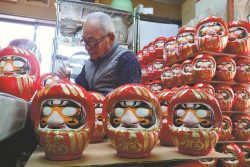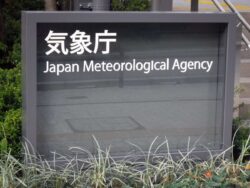Japan’ Sado Island Faces Tourism Challenges After World Heritage Listing of its Gold Mines

Tourists use a bus for touring places to be World Heritage sites in Sado, Niigata Prefecture, on Saturday.
17:20 JST, July 28, 2024
SADO, Niigata (Jiji Press) — The city of Sado in Niigata Prefecture faces the challenges of balancing tourism with residents’ lives and environmental conservation as now-defunct gold mines on the island city are set for registration as a UNESCO World Cultural Heritage site.
According to estimates, the Sado Island Gold Mines’ inscription on the heritage list will boost the annual number of visitors staying at lodging facilities in the city by 20% and give a ¥52 billion boost to the local economy. Also, efforts are underway to resolve shortages of transportation methods and accommodation facilities on the island.
The city forecasts that thanks to the inscription, the daily number of visitors staying on the island next month will reach around 2,600, up by about 20% from the usual level. Lodging facilities in Sado are able to take in a total of up to around 4,000 guests, but bookings tend to be concentrated in popular venues, leaving some facilities almost empty, according to a guest house operator in the city.
The Sado city government is aiming to ease the concentration of visitors by extending the tourism season until November.
It will rent out bicycles for free from late August to November, and offer in October-November a coupon worth ¥2,000 which can be used for shopping on the island when visitors purchase a set of a round-trip ferry ticket to and from the island and a travel plan featuring a gold dust mining experience.
Measures are being taken to boost transportation on the island, which does not have many fixed-route buses and suffers from shortages of car rentals in the summer.
A new loop-line bus entered into service in an area around gold mines near the island’s west coast in late April, while a bus route linking the island’s Ryotsu port and the gold mine district began operation Friday, with three buses available a day.
“It is better for the environment to have shared transportation than to increase rental cars,” Naoyo Yamamoto, 44, head of planning at the Sado Tourism Association, said.
“We must think about striking a balance between protecting and making use of [Sado],” Yamamoto continued, mentioning the lives of residents, agriculture on the island and the fact that it is home to crested ibises, designated as a special natural treasure by the government.
"Society" POPULAR ARTICLE
-

M4.9 Earthquake Hits Tokyo, Neighboring Prefectures
-

Israeli Tourists Refused Accommodation at Hotel in Japan’s Nagano Pref., Prompting Protest by Israeli Embassy and Probe by Prefecture
-

M7.5 Earthquake Hits Northern Japan; Tsunami Waves Observed in Hokkaido, Aomori and Iwate Prefectures
-

Tsukiji Market Urges Tourists to Avoid Visiting in Year-End
-

High School in Kyoto Says Students Shoplifted during Recent School Trip to Bali, Indonesia
JN ACCESS RANKING
-

Tokyo Economic Security Forum to Hold Inaugural Meeting Amid Tense Global Environment
-

Keidanren Chairman Yoshinobu Tsutsui Visits Kashiwazaki-Kariwa Nuclear Power Plant; Inspects New Emergency Safety System
-

Imports of Rare Earths from China Facing Delays, May Be Caused by Deterioration of Japan-China Relations
-

University of Tokyo Professor Discusses Japanese Economic Security in Interview Ahead of Forum
-

Japan Pulls out of Vietnam Nuclear Project, Complicating Hanoi’s Power Plans























